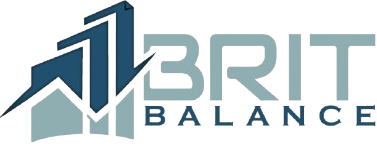From Financial Chaos to Data-Driven Profitability
The Challenge: A UK-based DTC (Direct-to-Consumer) e-commerce brand experiencing 300% YoY growth was plagued by accrual-to-cash discrepancies, unsynchronized sales channel data (Shopify, Amazon), and no coherent Cost of Goods Sold (COGS) allocation. This resulted in a gross margin variance of over 15% from projections, obscuring true profitability and hindering Series A fundraising efforts.
Our Solution: We executed a full-scale financial ops overhaul. This included implementing a multi-step closing cycle, establishing robust accrual accounting protocols, and integrating their platforms into a centralized ERP (Xero) via API connectors. We deployed activity-based costing to accurately allocate overhead, moving from a standard costing model to one that reflected actual logistics and acquisition costs.
The Result: Within two fiscal quarters, we delivered a 99.8% accurate reconciliation between bank statements and ledger entries. Our granular profitability analysis identified that 30% of their SKUs were operating at a net loss. By rationalizing the product portfolio and re-negotiating 3PL contracts, we boosted their net margin by 22% (a 450-basis point increase) and provided the auditable financials required to secure a $2.5M venture capital term sheet.




Navigating Multi-State Nexus and Unlocking Tax Incentives
The Challenge: A US SaaS startup with a decentralized workforce across 12 states triggered unwitting nexus, creating a complex web of apportionment, withholding, and sales tax obligations. They faced potential penalties from outstanding exposures estimated at $150,000 and had no internal framework for tax compliance.
Our Solution: Our tax advisory team conducted a comprehensive nexus study and implemented a multi-jurisdictional compliance framework. We leveraged advanced tax automation software (Avalara) for real-time sales tax calculation and remittance. Concurrently, we performed a quantitative analysis qualifying their development activities for the Federal R&D Tax Credit under IRS Section 41.
The Result: We secured a “voluntary disclosure agreement” (VDA) with three states, limiting look-back periods and abating penalties. The proactive compliance structure reduced their annual tax filing workload by 70%. Furthermore, we successfully filed a $285,000 R&D tax credit claim, resulting in a direct cash refund that was reinvested into their engineering team.


CFO-Led Working Capital Optimization & Restructuring
The Challenge: A Canadian light manufacturing firm with $8M in revenue was grappling with a critical working capital deficit. Their cash conversion cycle (CCC) was stretched to 95 days, driven by 45-day inventory (DIO) and 60-day receivables (DSO), against payables of only 30 days (DPO). This illiquidity prevented a crucial $500,000 CAPEX investment in automated machinery.
Our Solution: As their outsourced CFO, we initiated a working capital restructuring program. We implemented stringent Days Sales Outstanding (DSO) KPIs, introduced early-payment discounts, and renegotiated vendor terms to extend Days Payable Outstanding (DPO) to 45 days. We also led an ABC (Activity-Based Costing) analysis that revealed a misallocation of factory overhead by 18%.
The Result: Within six months, we compressed the CCC by 40% to 57 days, freeing up $750,000 in trapped cash flow. The ABC model provided the data to justify a 7% price increase on low-volume, complex products without losing volume. The combined effect funded the CAPEX investment in full and increased EBITDA margin by 5 percentage points.


End-to-End Process Re-engineering & Digital Transformation
The Challenge: A US-based logistics provider with $15M in revenue was operating on legacy systems, relying on manual, paper-based P2P (Procure-to-Pay) and O2C (Order-to-Cash) cycles. This resulted in a 17% invoice error rate, a 45-day month-end close, and an accounts receivable delinquency rate of 12%.
Our Solution: We architected a full digital transformation, migrating their operations to Oracle NetSuite ERP. We designed and implemented automated workflows for invoice processing (using OCR technology), integrated their TMS (Transportation Management System) for real-time revenue recognition, and established a rule-based collections waterfall within the CRM.
The Result: The transformation yielded a 99.5% reduction in manual data entry and slashed the month-end close timeline to 5 business days. The automated dunning process reduced the delinquency rate to 2.5% and decreased DSO by 28 days. This operational efficiency allowed the company to handle a 40% increase in transaction volume without adding to the G&A (General & Administrative) headcount, translating to $350,000 in annualized operational savings.
